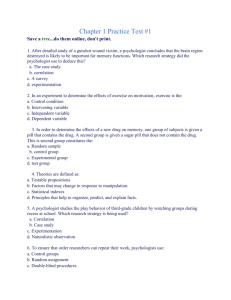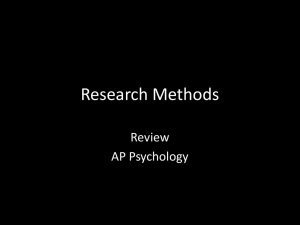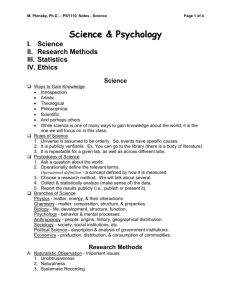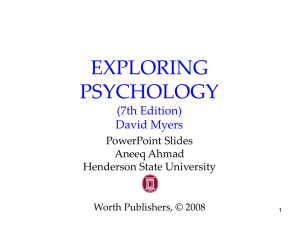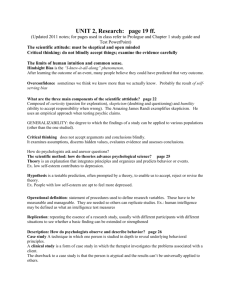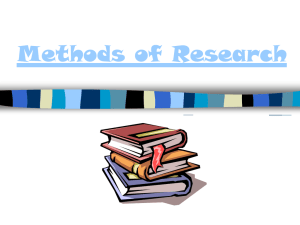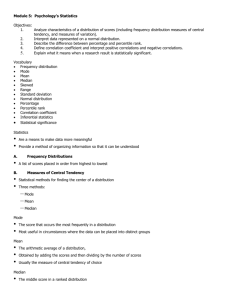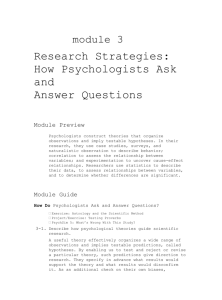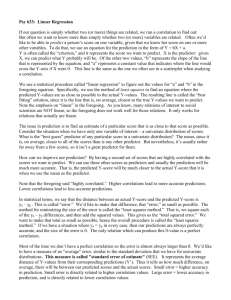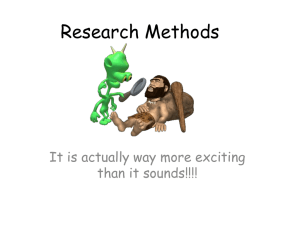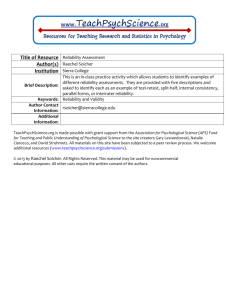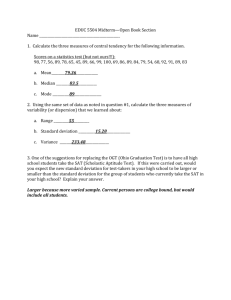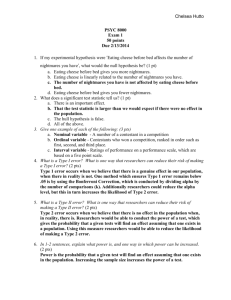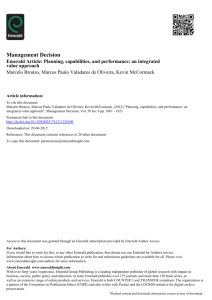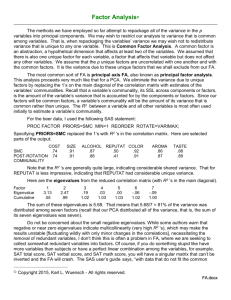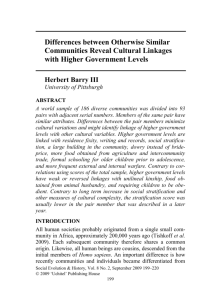Analyzing Observations & Experiments
advertisement
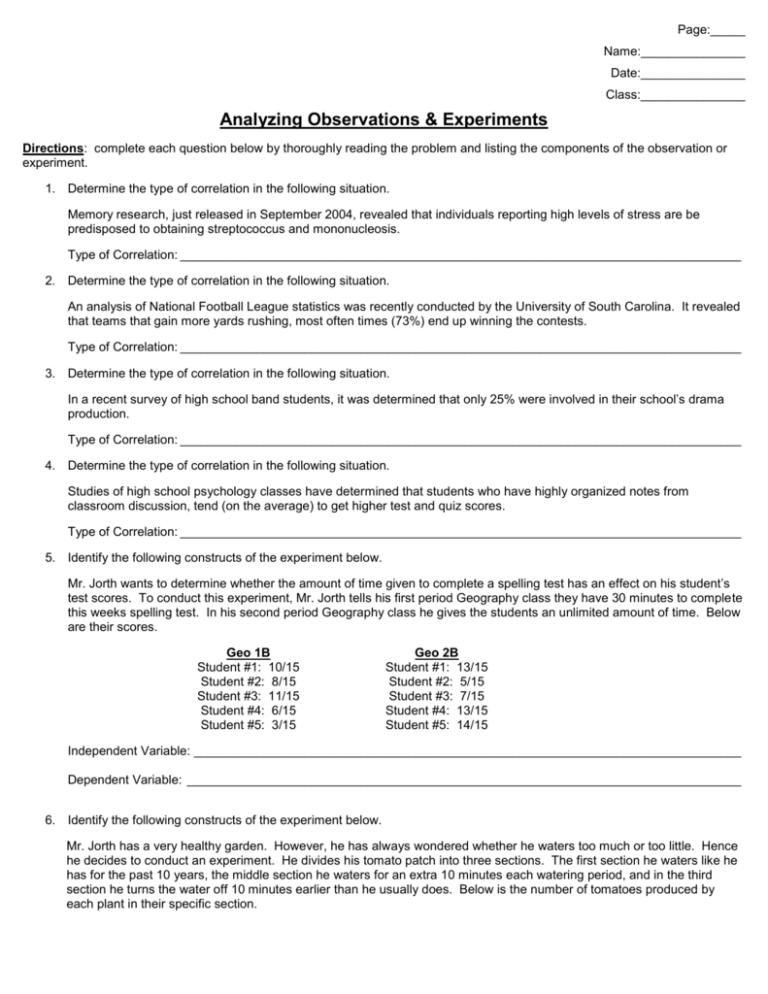
Page:_____ Name:_______________ Date:_______________ Class:_______________ Analyzing Observations & Experiments Directions: complete each question below by thoroughly reading the problem and listing the components of the observation or experiment. 1. Determine the type of correlation in the following situation. Memory research, just released in September 2004, revealed that individuals reporting high levels of stress are be predisposed to obtaining streptococcus and mononucleosis. Type of Correlation: _________________________________________________________________________________ 2. Determine the type of correlation in the following situation. An analysis of National Football League statistics was recently conducted by the University of South Carolina. It revealed that teams that gain more yards rushing, most often times (73%) end up winning the contests. Type of Correlation: _________________________________________________________________________________ 3. Determine the type of correlation in the following situation. In a recent survey of high school band students, it was determined that only 25% were involved in their school’s drama production. Type of Correlation: _________________________________________________________________________________ 4. Determine the type of correlation in the following situation. Studies of high school psychology classes have determined that students who have highly organized notes from classroom discussion, tend (on the average) to get higher test and quiz scores. Type of Correlation: _________________________________________________________________________________ 5. Identify the following constructs of the experiment below. Mr. Jorth wants to determine whether the amount of time given to complete a spelling test has an effect on his student’s test scores. To conduct this experiment, Mr. Jorth tells his first period Geography class they have 30 minutes to complete this weeks spelling test. In his second period Geography class he gives the students an unlimited amount of time. Below are their scores. Geo 1B Student #1: 10/15 Student #2: 8/15 Student #3: 11/15 Student #4: 6/15 Student #5: 3/15 Geo 2B Student #1: 13/15 Student #2: 5/15 Student #3: 7/15 Student #4: 13/15 Student #5: 14/15 Independent Variable: _______________________________________________________________________________ Dependent Variable: ________________________________________________________________________________ 6. Identify the following constructs of the experiment below. Mr. Jorth has a very healthy garden. However, he has always wondered whether he waters too much or too little. Hence he decides to conduct an experiment. He divides his tomato patch into three sections. The first section he waters like he has for the past 10 years, the middle section he waters for an extra 10 minutes each watering period, and in the third section he turns the water off 10 minutes earlier than he usually does. Below is the number of tomatoes produced by each plant in their specific section. 6. Continued. Normal 15 18 17 18 13 10 min Longer 13 15 12 12 13 10 min Shorter 9 8 9 11 8 Independent Variable: _______________________________________________________________________________ Dependent Variable: ________________________________________________________________________________ Control Group(s): ___________________________________________________________________________________ Experimental Group(s): ______________________________________________________________________________ 7. Identify the following constructs of the experiment below. Mr. Jorth is curious as to how his teaching methods are helping his students perform on standardized tests (i.e.: Iowa Tests of Educational Development - ITED). So to test his theory he decides that for an entire year he will examine his teaching methods on his United States History classes. In his second period class he does all the same activities he did in the previous year (lecture, mixed with videos, group work and projects), in the fourth hour class he decides to only lecture and give tests every month (nothing else, no group work, no projects, nothing other than lecture and tests) and in the eighth period class he experiments with videos (each day he shows a video on the topic of study and the students end each class with a discussion on the topic). Below are the results of Mr. Jorth’s study of his teaching methods and the test scores on the ITED. 2nd Period Scores 95% 87% 64% 93% 76% 4th Period Scores 74% 62% 71% 82% 90% 8th Period Scores 72% 88% 71% 91% 56% Independent Variable: _______________________________________________________________________________ Dependent Variable: ________________________________________________________________________________ Control Group(s): ___________________________________________________________________________________ Experimental Group(s): ______________________________________________________________________________ Single or Double Blind (Why): _________________________________________________________________________ _________________________________________________________________________________________________ 8. Identify the following constructs of the experiment below. Mr. Jorth is curious as to whether or not, sugar has a positive or negative affect on students concentration in his class. But, he is concerned about his integrity and skewing the results of his study by knowing who is obtaining sugar and who is not. So, in order to test his theory, he has convinced all second hour teachers to distribute a pill to their students. Some students receive a pill with zero (0) grams of sugar, others get 50 grams and a third group obtains 150 grams of sugar; but to make the test even more valid, all pills are the same color so the students do not know if they are obtain sugar or not. Independent Variable: _______________________________________________________________________________ Dependent Variable: ________________________________________________________________________________ Control Group(s): ___________________________________________________________________________________ Experimental Group(s): ______________________________________________________________________________ Single or Double Blind (Why): _________________________________________________________________________ _________________________________________________________________________________________________
